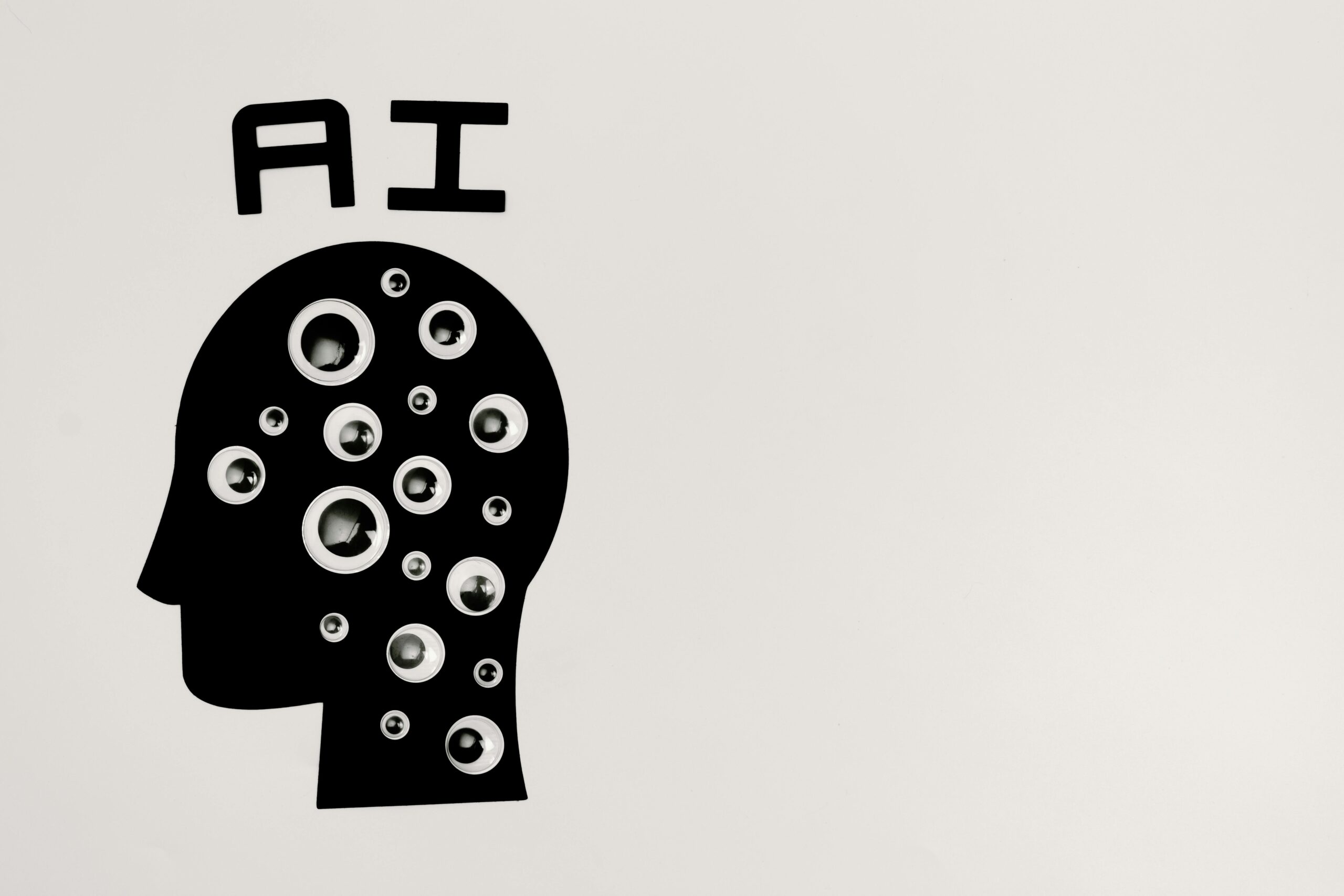Introduction: Why AI Matters in 2025
Artificial Intelligence is no longer confined to research labs or tech giants—it’s become an indispensable tool that’s transforming how we work, create, and live. From boosting productivity to unlocking new creative possibilities, AI offers practical applications for everyone, regardless of technical expertise. This comprehensive guide breaks down what AI is, explores the most effective AI tools available today, and provides actionable strategies to integrate these powerful technologies into your daily life.
Key notes
- AI tools like ChatGPT, Claude, and Gemini offer free tiers and premium features for writing, research, and problem-solving.
- Maximize productivity by using AI for email drafting, meeting transcription, and data analysis across professional and personal tasks.
- Ethical AI use requires verifying information, maintaining human judgment, and being transparent about AI-generated content.
What Is AI and How Does It Actually Work?
Artificial Intelligence refers to computer systems designed to perform tasks that typically require human intelligence. At its core, AI works by:
- Learning from data: AI systems analyze vast datasets to identify patterns and make predictions
- Processing natural language: Modern AI can understand, interpret, and generate human language
- Making decisions: Advanced AI can evaluate options and recommend or take appropriate actions
Large Language Models (LLMs) like ChatGPT, Claude, and Google Gemini represent the cutting edge of AI technology. These systems have been trained on trillions of words from books, articles, websites, and other sources, enabling them to generate human-like text, answer questions, solve problems, and even engage in meaningful conversations.
Top AI Tools in 2025: Features, Costs, and Applications
Today’s AI landscape offers tools ranging from free services to premium subscriptions with advanced capabilities. Here’s a current overview of the most valuable AI platforms:
Conversational Assistants
- ChatGPT by OpenAI
- Free tier: Basic conversation and assistance
- Plus ($20/month): Priority access, GPT-4o capabilities, plugins, higher message limits
- Team ($30/user/month): Collaborative workspaces and advanced data controls
- Best for: Writing assistance, brainstorming, learning, coding help, and general information
- Claude by Anthropic
- Free tier: Access to Claude 3 Haiku
- Claude Pro ($20/month): Access to Claude 3 Opus, higher message limits, priority during peak times
- Enterprise (custom pricing): Custom solutions with enhanced security and support
- Best for: Nuanced responses, longer conversations, thoughtful reasoning, and safety
- Google Gemini
- Free tier: Basic conversation and assistance
- Advanced ($19.99/month): Access to Gemini Advanced model, increased capacity, priority access
- Best for: Research, complex problem-solving, and Google ecosystem integration
- Perplexity AI
- Free tier: AI-powered search with citations
- Pro ($20/month): More powerful model, higher query limits, Pro features
- Best for: Research with reliable sources, academic work, and fact-checking
Productivity Tools
- Microsoft Copilot
- Personal ($20/month): AI assistance across Microsoft applications
- Business ($30/user/month): Enterprise-grade features with enhanced security
- Included with Microsoft 365: Basic AI features integrated into Office apps
- Best for: Document creation, data analysis, presentation design, and email management
- Notion AI
- Basic ($10/month with Notion subscription): Writing assistance, summarization, brainstorming
- Team ($20/user/month): Collaborative AI features for teams
- Best for: Note-taking, project management, and knowledge organization
- Otter.ai
- Free tier: Limited transcription minutes
- Pro ($16.99/month): 1,200 minutes of transcription, real-time transcription
- Business ($30/user/month): Advanced features for teams
- Best for: Meeting transcription, lecture notes, and interview recording
Creative Tools
- Midjourney
- Basic ($10/month): ~200 image generations
- Standard ($30/month): ~1000 image generations and faster speeds
- Pro ($60/month): ~4000 image generations and priority processing
- Best for: High-quality artistic image generation
- DALL-E 3
- Available through ChatGPT Plus ($20/month): Integrated image generation
- API access: Pay-per-use pricing for developers
- Best for: Realistic image creation from detailed text descriptions
- Adobe Firefly
- Included with Creative Cloud ($54.99/month): AI image generation and editing
- Standalone ($14.99/month): Access to Firefly without full Creative Cloud
- Best for: Commercial use with copyright protection, design professionals
- Runway
- Free tier: Limited access to AI video capabilities
- Pro ($15/month): More video generation, higher resolution
- Unlimited ($35/month): Extensive access to all features
- Best for: AI video generation, editing, and special effects

How to Use AI for Maximum Efficiency and Productivity
AI can dramatically streamline daily tasks and improve time management. Here are practical ways to leverage AI for productivity:
Writing and Communication
- Email Management: Use AI to draft responses, summarize long email threads, and prioritize your inbox
- Try saying: “Draft a professional response to this client inquiry about our pricing structure”
- Document Creation: Generate reports, proposals, and presentations in a fraction of the time
- Try saying: “Create an outline for a quarterly business report focusing on sales growth and challenges”
- Meeting Enhancement: Automate note-taking, action item extraction, and follow-up emails
- Try saying: “Summarize this meeting transcript and extract the key action items by person”
Task Automation and Organization
- Workflow Automation: Connect AI tools with platforms like Zapier to create automated workflows
- Example: Automatically generate social media content when you publish a blog post
- Calendar Optimization: AI scheduling assistants like Reclaim.ai or Motion can analyze your work patterns and optimize your calendar
- Benefit: Reduce meeting fatigue while preserving focused work time
- Knowledge Management: Use AI to organize information, create searchable knowledge bases, and retrieve information quickly
- Try saying: “Organize these product specifications into a structured database format”
Data Analysis and Decision Support
- Spreadsheet Enhancement: AI can analyze trends, suggest formulas, and visualize data in tools like Excel and Google Sheets
- Try saying: “Analyze this sales data and identify the top-performing products by region”
- Research Acceleration: Generate literature reviews, summarize research papers, and compile information from multiple sources
- Try saying: “Summarize the key findings from these three research papers on renewable energy”
- Decision Analysis: Use AI to evaluate options, identify pros and cons, and recommend optimal choices
- Try saying: “Help me analyze the advantages and disadvantages of these three business strategies”
How to Leverage AI for Creativity and Innovation
AI isn’t just about efficiency—it can also spark creativity and enable new forms of expression:
Idea Generation and Problem-Solving
- Brainstorming Assistant: Generate dozens of ideas for projects, articles, business ventures, or creative works
- Try saying: “Generate 20 unique business ideas for a sustainability-focused entrepreneur”
- Perspective Expansion: Use AI to explore different viewpoints and challenge your thinking
- Try saying: “Provide three different perspectives on the impact of remote work on company culture”
- Iterative Improvement: Generate multiple versions or variations of a concept to refine your thinking
- Try saying: “Create five different introductions for my presentation on digital marketing trends”
Creative Content Development
- Visual Creation: Generate images, design concepts, and visual assets for projects
- Try saying: “Create an image of a futuristic sustainable city with vertical gardens and solar panels”
- Content Adaptation: Repurpose content across different formats and platforms
- Try saying: “Convert this blog post into a script for a 5-minute YouTube video”
- Style Exploration: Experiment with different writing styles, tones, and approaches
- Try saying: “Rewrite this product description in a humorous tone targeting millennials”
Learning and Skill Development
- Personal Tutoring: Use AI to explain complex concepts, provide examples, and test understanding
- Try saying: “Explain quantum computing to me like I’m a high school student”
- Skill Practice: Create scenarios to practice skills like public speaking, negotiations, or language learning
- Try saying: “Create a role-playing scenario where I practice negotiating a salary increase”
- Feedback Generation: Get constructive feedback on your writing, presentations, or creative work
- Try saying: “Review this cover letter and suggest improvements for clarity and impact”

Real-World AI Applications Across Industries
AI is transforming various sectors with practical applications that solve real problems:
Education and Learning
- Personalized Learning: AI tutors like Khan Academy’s Khanmigo ($9/month for students) adapt to individual learning styles and pace
- Impact: Students can receive immediate feedback and customized explanations
- Content Creation for Educators: AI helps teachers generate lesson plans, quizzes, and educational materials
- Time saved: Up to 6 hours per week on lesson preparation
- Language Learning: Tools like Duolingo Max ($19.99/month) use AI for conversation practice and personalized instruction
- Benefit: Practical language practice without the anxiety of human interaction
Small Business Operations
- Customer Service: AI chatbots handle routine inquiries, freeing up staff for complex issues
- Example: A 24/7 chatbot can answer product questions, process simple returns, and collect customer information
- Content Marketing: AI helps create blog posts, social media content, and email newsletters
- Efficiency gain: Generate a month’s worth of social media content in under an hour
- Financial Management: AI tools analyze spending patterns, forecast cash flow, and identify cost-saving opportunities
- Tools to try: Xero with AI features, QuickBooks with Copilot, or FreshBooks
Healthcare and Wellness
- Symptom Assessment: Apps like Ada Health (free) use AI to analyze symptoms and suggest possible conditions
- Caution: Always consult medical professionals for diagnosis and treatment
- Mental Health Support: Platforms like Woebot (free) and Wysa ($99/year) provide cognitive behavioral therapy techniques
- Accessibility: Available 24/7 without appointment scheduling
- Health Monitoring: AI-powered wearables analyze patterns to provide personalized health insights
- Example: The Oura Ring ($299 + $5.99/month) tracks sleep patterns and suggests improvements
Personal Development
- Habit Formation: AI coaches help establish and maintain positive habits
- Apps to try: Habitica (free/premium $4.99/month) with AI integration or Coach.me ($25/month for coaching)
- Financial Planning: AI advisors provide personalized investment and savings strategies
- Services like: Wealthfront or Betterment (0.25% annual fee) use AI for portfolio management
- Career Development: AI tools help with resume optimization, interview preparation, and skill identification
- Try: LinkedIn Premium with AI features ($39.99/month) or Resume Worded (free/premium $49.99)
Best Practices for Effective AI Use
To get the most value from AI while avoiding potential pitfalls:
Input Optimization
- Be specific: Provide clear context and detailed instructions
- Use examples: Show AI exactly what you want by including examples
- Iterate: Refine your prompts based on the responses you receive
Critical Evaluation
- Verify information: AI can occasionally “hallucinate” or generate incorrect information
- Maintain judgment: Use AI as a tool rather than delegating decision-making entirely
- Check for bias: Be aware that AI may reflect societal biases in its training data
Ethical Considerations
- Transparency: Disclose when content is AI-generated in professional contexts
- Privacy awareness: Be cautious about sharing sensitive personal or business information
- Human touch: Preserve human creativity and critical thinking in your workflow
The Future of AI in Everyday Life
As AI technology continues to evolve, we can expect:
- More personalized experiences: AI will increasingly adapt to individual preferences and needs
- Seamless integration: AI will become less visible as it embeds into everyday tools and devices
- Enhanced human-AI collaboration: New interfaces will enable more natural interaction with AI
Conclusion: Embracing AI as Your Intelligent Partner
Artificial intelligence represents one of the most powerful tools available to enhance human capability. By thoughtfully incorporating AI into your daily routine, you can:
- Save countless hours on routine tasks
- Explore creative possibilities beyond your current patterns of thinking
- Gain insights from vast amounts of information that would be impossible to process manually
- Focus your human intelligence on what matters most—creativity, connection, and critical thinking
The most successful AI users approach these tools not as replacements for human thought, but as partners that amplify our uniquely human capabilities. Start with the applications that solve your most pressing challenges, experiment regularly, and develop your own personal AI workflow that transforms how you work and create.
What AI application will you try first?
Author
Jacob
Category
Artificial Intelligence
Read Time
10 min
